Light Redistribution by Diffusion
The use of fully diffuse translucent glazing materials redistributes the incoming light equally in all directions. This means rather than the light directing downward toward the floor, just as much is directed inward and upward. This redistribution means that the useful daylight is distributed deeper into a space. This maximizes daylight potential while eliminating glare and hotspots.
Standard Vision Glass
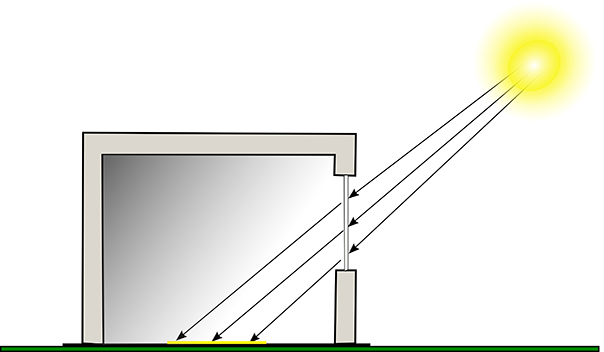
Solera® Insulated Glass Daylighting Units
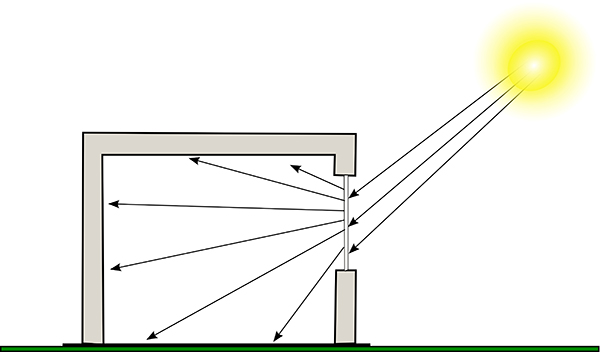
Daylight Simulation
Advanced Glazings Ltd. conducts daylight simulations using LBNL’s Radiance. Radiance is highly accurate ray-tracing software which is used by architects and engineers to predict illumination and evaluate designs and daylighting technologies. Radiance daylighting simulations will demonstrate how Solera® diffuses natural light thereby reducing contrast (glare) and increasing the overall ambient light level.
Evaluating Light Diffusion
Not all Translucent materials are equal. Transmittance of materials can be vary from specular to fully diffused, or some varying degree or combination between the two. Vision glass has purely specular transmission, i.e. light passes straight through with no scattering. Other glazing materials such as acid etched glass, or white laminate PVB scatter light sufficiently to obscure view, but the scattering is of relatively narrow angle, therefore the brightness of those materials will vary greatly depending on your direction of view and the direction of the incident light. Solera® is an excellent light diffuser, meaning light that it transmits is widely scattered such that the brightness is equal in all directions.
Regardless of the angle the sun strikes Solera®, the unit should appear equally bright regardless of the direction of view. Radiance daylight simulations can be used to evaluate and demonstrate the relative performance of different glazing materials. The following figures combine plots from physical light diffusion measurements with renderings generated with Radiance. The plots show the measured distribution of what comes out of the glazing material when light shines into the glazing at 45°. Two versions of renderings are depicted, one showing a photorealistic representation of an example space, the other with a falsecolour version showing incident light levels. These clearly demonstrate the superiority of fully diffused light.
Standard Vision Glass
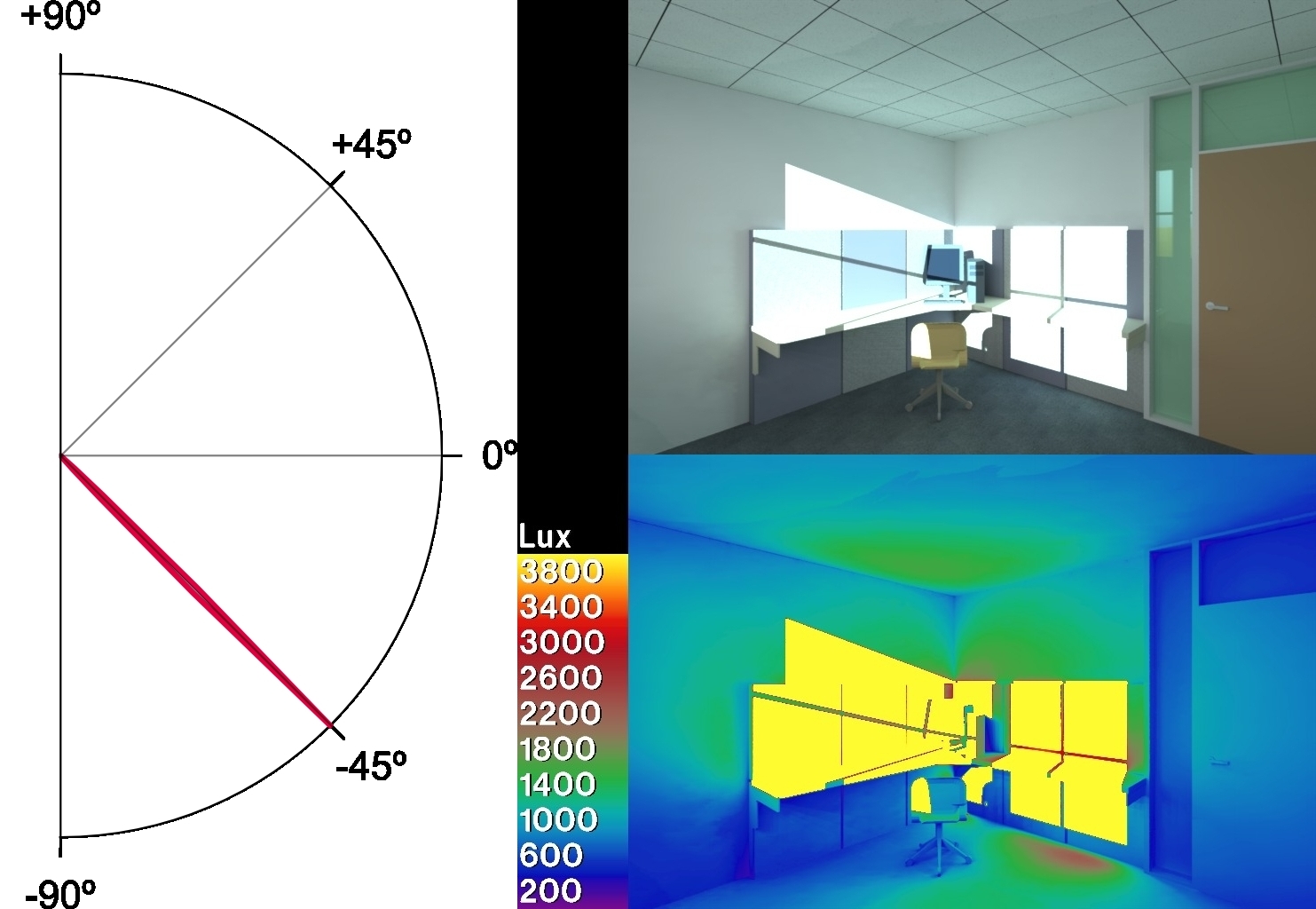
Acid Etched Glass
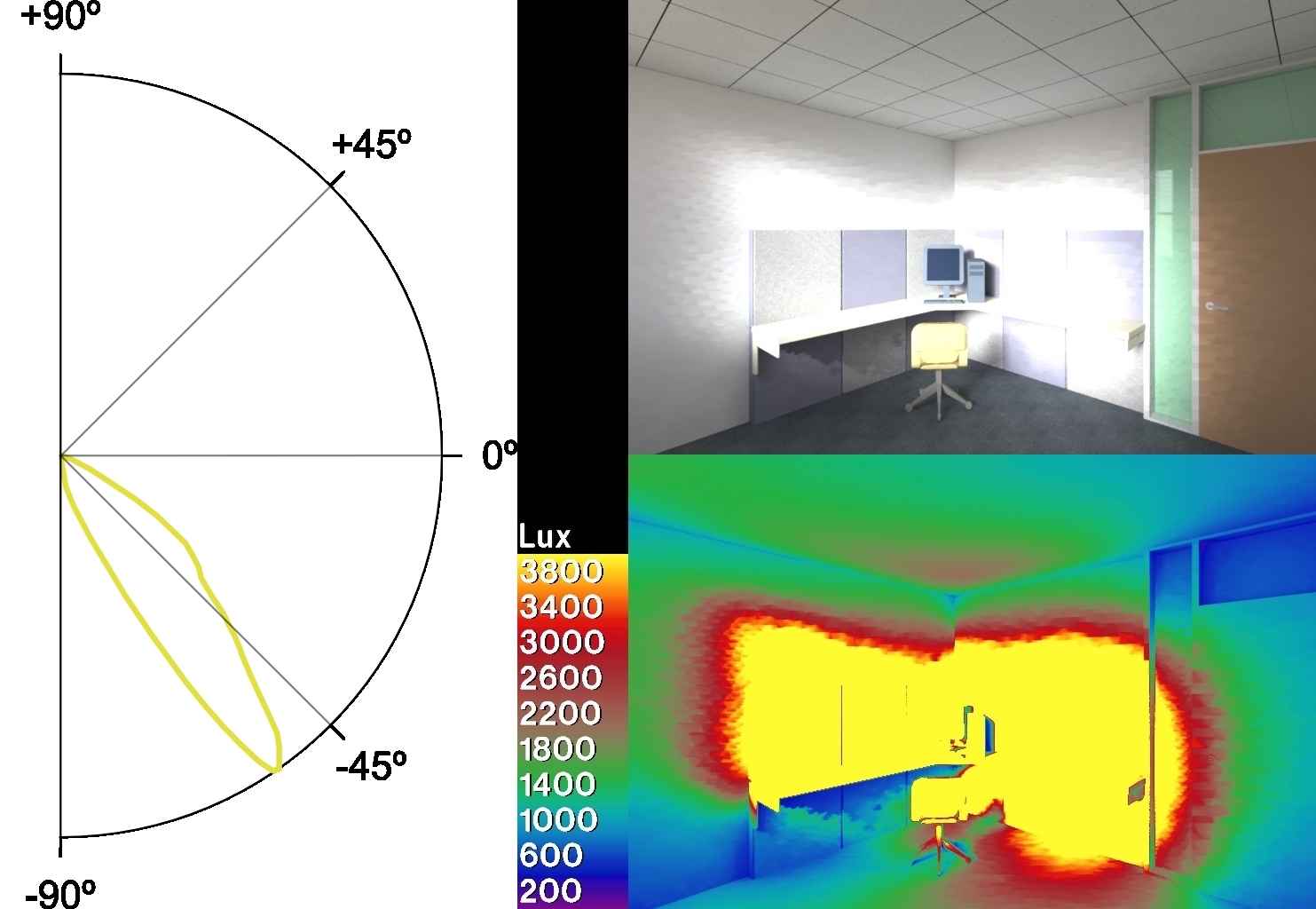
White Laminated Glass

Solera® Insulated Glass Daylighting Units
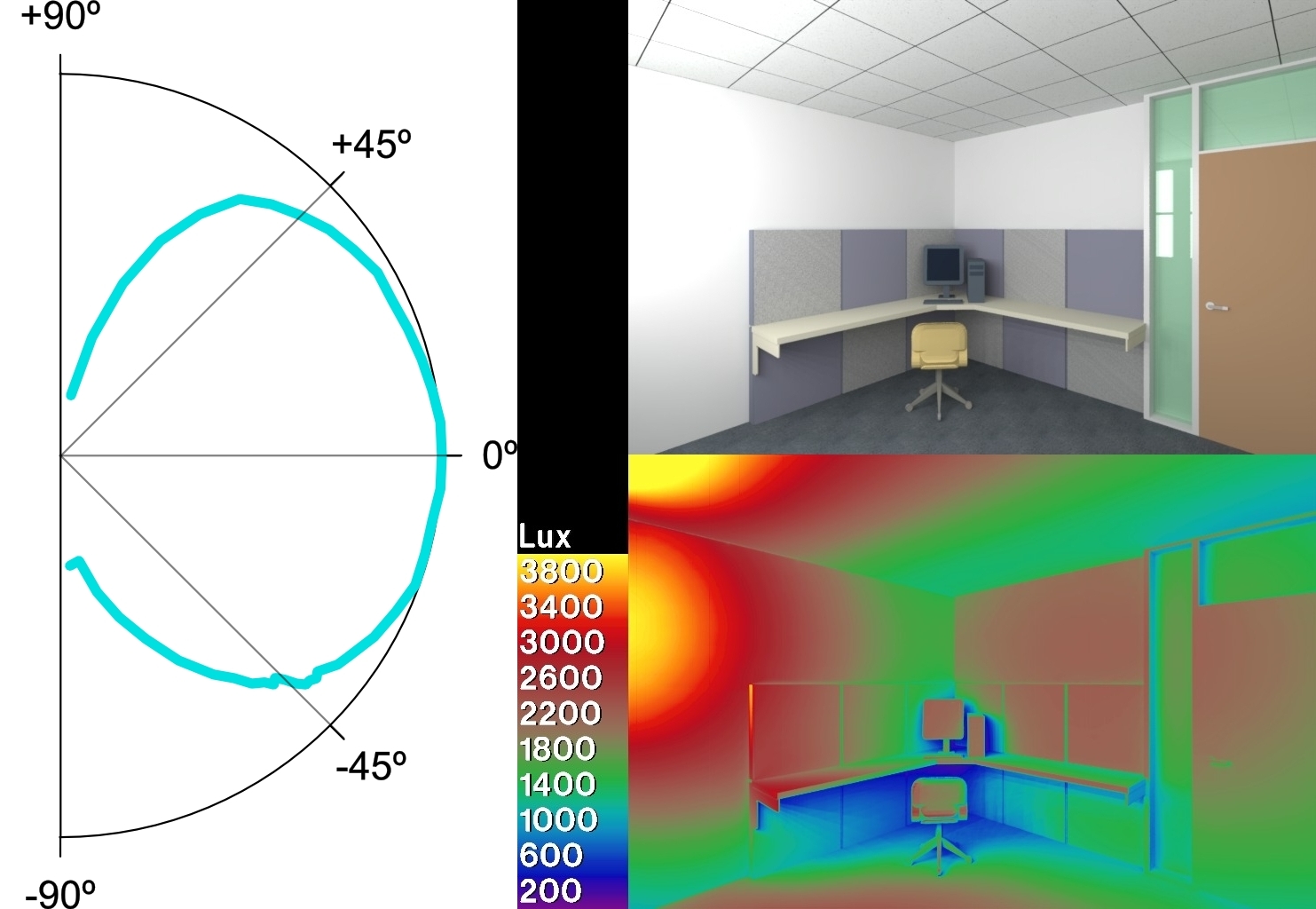
The glazing sample is illuminated by a quartz halogen spotlight, at an incidence of 45 degrees. A light meter measures the radiant intensity leaving the aperture in the mask that covers the back of the sample. The measurement is repeated over a range of angles from -85 to +85 and the results are recorded. (Measurements at exactly 90° not physically possible).
While products such as Acid Etched Glass and White Laminated Glass can be classified as "Narrow Angle Light Diffusers," Solera® – with its exceptional light diffusion – is classified as a "Wide Angle Light Diffuser." For a technical brief on the LDP setup and experiment, contact us today.